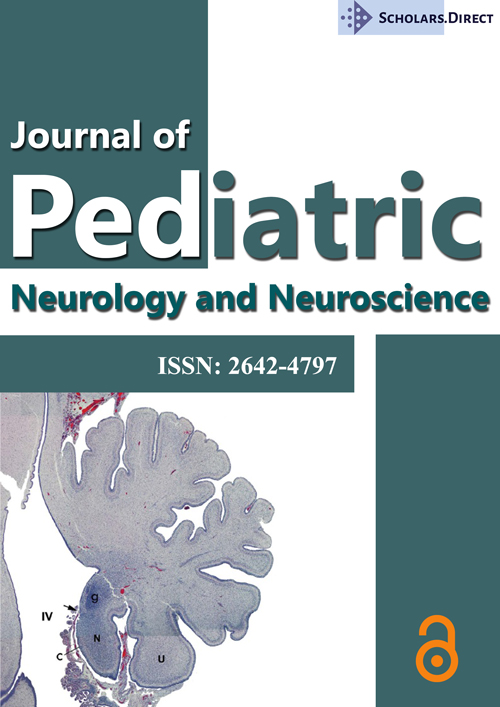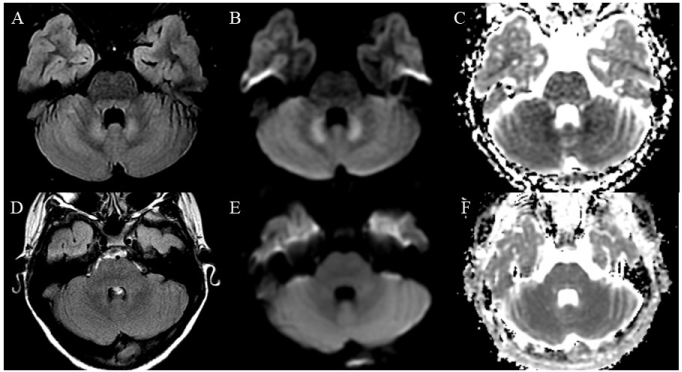Reversible Signal Abnormalities in Bilateral Dentate Nuclei Secondary to Isoniazid Neurotoxicity
Case
An 11-year-old Colombian female on isoniazid for recently diagnosed latent tuberculosis presented to the emergency department after a first-time, generalized tonic-clonic seizure. She exhibited mild bilateral hypometria on finger-to-nose testing, lower limb ataxia on heel-to-shin testing, and dysmetria on rhythmic finger tapping. MRI brain revealed symmetric T2/FLAIR hyper intensities with diffusion restriction and apparent diffusion coefficient correlate in bilateral dentate nuclei (Figure 1A, Figure 1B, Figure 1C). It was discovered that the patient had mistakenly taken twice the prescribed dose of isoniazid for two weeks prior to presentation. Eighteen days after cessation of isoniazid, her exam returned to baseline, and MRI demonstrated resolution of the abovementioned signal changes (Figure 1D, Figure 1E, Figure 1F). Seizure, abnormal cerebellar exam, and bilateral dentate nuclei lesions on MRI may reflect reversible manifestations of supratherapeutic isoniazid [1].
References
Corresponding Author
John R McLaren, Department of Neurology, Massachusetts General Hospital, 175 Cambridge St, Suite 340, Boston, MA 02140, USA, Tel: 617-726-6540, Fax: 617-726-0230.
Copyright
© 2021 Caragher S. This is an open-access article distributed under the terms of the Creative Commons Attribution License, which permits unrestricted use, distribution, and reproduction in any medium, provided the original author and source are credited.





